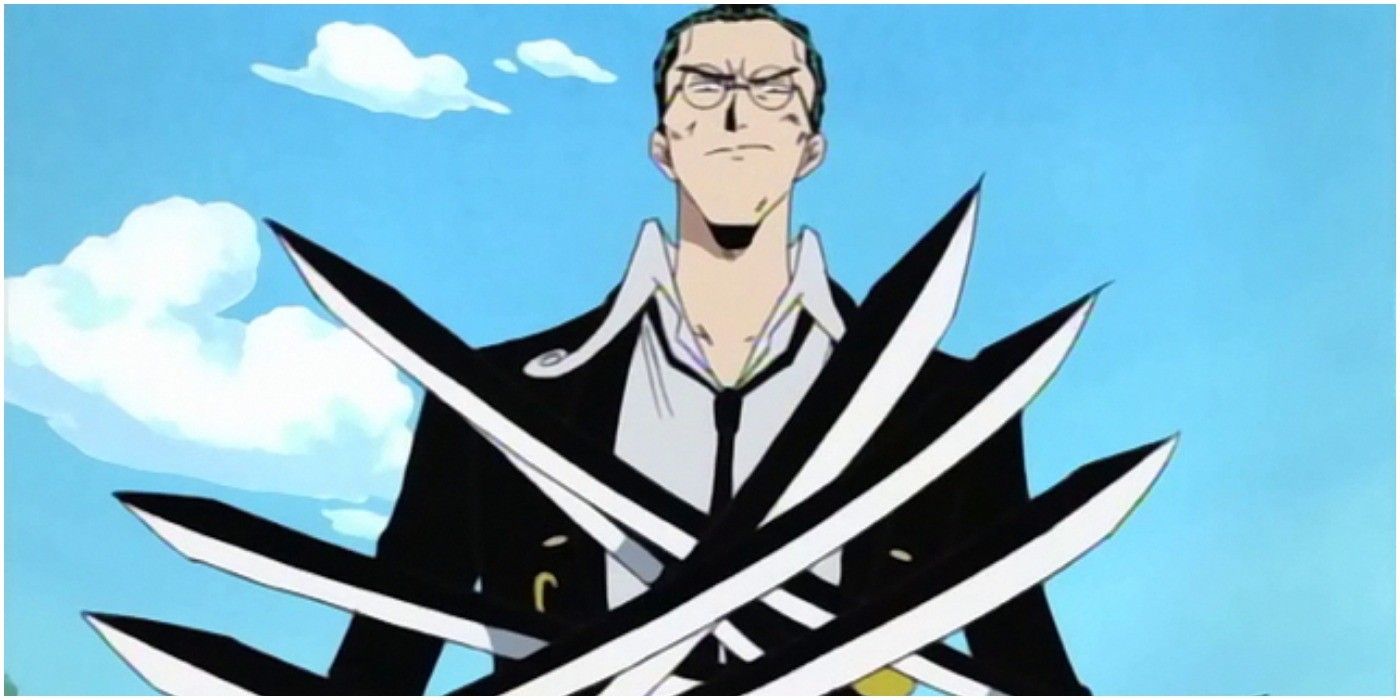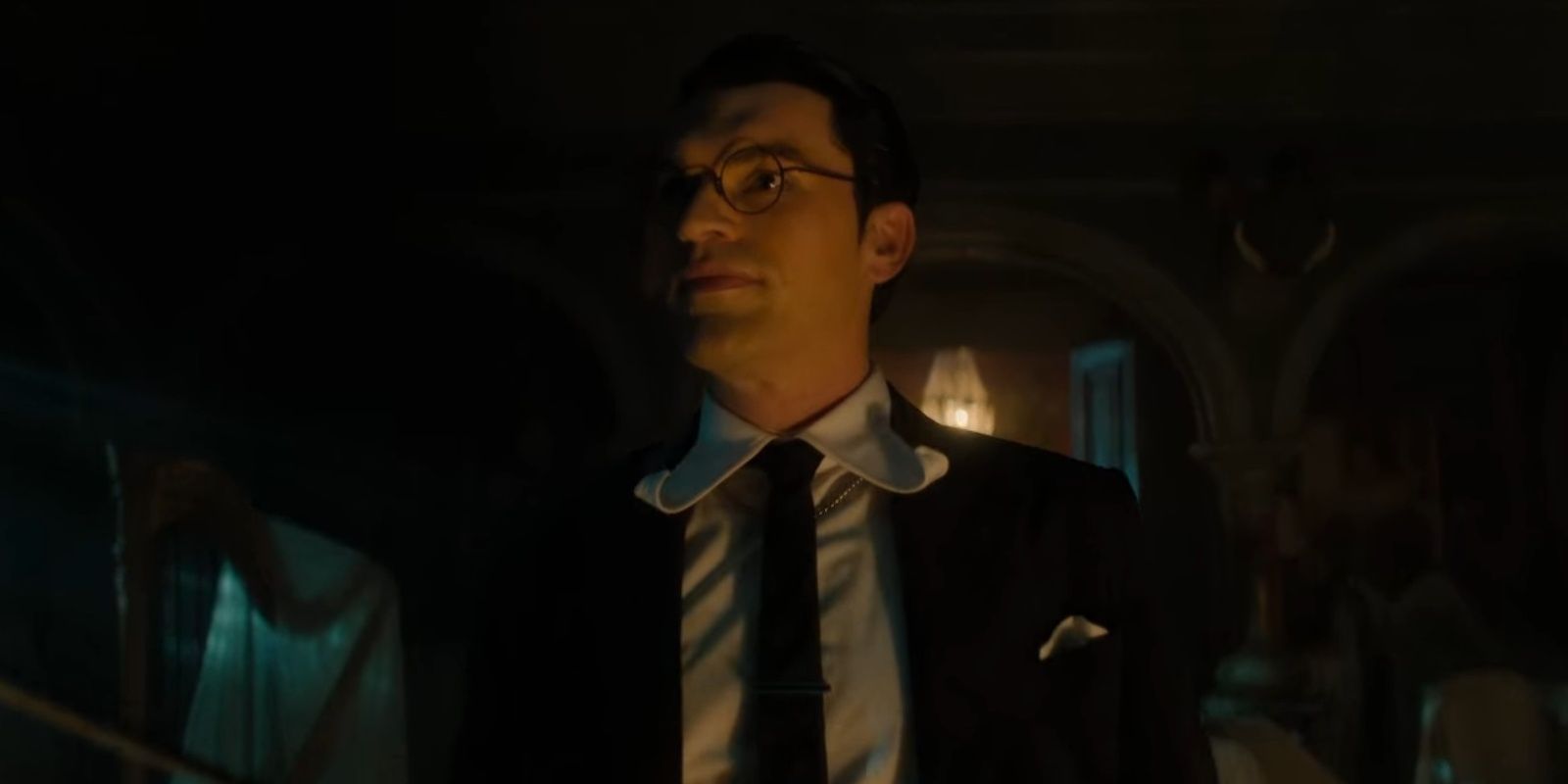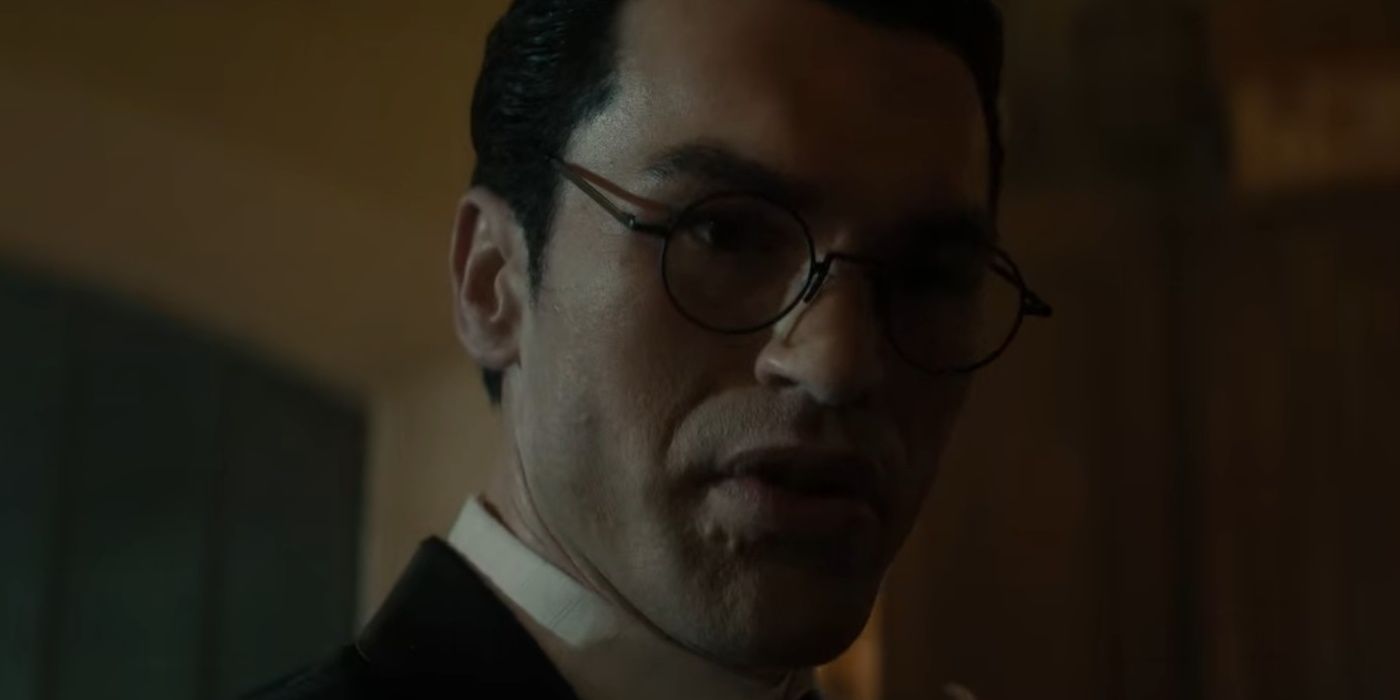Summary
- Captain Kuro, originally a forgettable anime villain, became a true horror monster in Netflix's adaptation.
- In the anime, he was just a boss fight on a sunny, open battlefield.
- Live-action adaptations of anime have their own strengths, such as horror, while anime horror is weak. Netflix's One Piece capitalizes on these strengths.
Netflix's One Piece live-action series is the first truly great anime adaptation for many reasons, including its pitch-perfect casting for the main characters, the gorgeous set pieces, and most of all, some resourceful ideas to compress 60+ anime episodes into just one live-action season. This included streamlining and enhancing certain One Piece story arcs so they feel faster, fresher, and more creative than ever. That includes the Syrup Village story arc, which introduced Usopp the habitual liar.
In the original One Piece anime, Luffy's trio took on the butler Klahadore, or pirate captain Kuro, and won a stunning victory to save Usopp and miss Kaya from certain doom. The core story carried over well in Netflix's live-action version, but with some notable upgrades and revisions. That includes transforming Captain Kuro into a true horror villain who truly stole the show.
How the Original Anime Portrayed Captain Kuro
The original One Piece anime used bright colors and exciting action sequences to tell the tale of the Syrup Village arc, with Captain Kuro's sinister personality and dark outfit contrasting with the cartoony visuals around him. He was introduced as miss Kaya's loyal butler Klahadore, a scheming pirate who was waiting for the right moment to strike and seize Kaya's family fortune. Over time, the Straw Hats and Usopp realized something was wrong, and they took on the Black Cat pirate crew one fateful morning near the island's shore. The Straw Hats evened the odds by creating a slick battlefield to slip up the battlefield, though they still had their hands full with Sham and Buchi, Kuro's top lieutenants, and most of all, Captain Kuro himself.
Protagonist Monkey D. Luffy fought a fierce battle against Kuro in broad daylight, desperately avoiding Kuro's claw-swords and superior speed and agility. Kuro lived up to his pirate crew's name with his quick, slice-based fighting style, with his appearance, intelligence, and combat techniques contrasting sharply with Luffy's colorful outfit and blunt fighting technique. Eventually, Luffy triumphed, and the day was saved. However, even if Captain Kuro felt cool at the time, the narrative soon moved on to much better villains such as Arlong the fish-man and Captain Smoker in the East Blue saga, and Kuro felt forgettable by comparison. He was just another greedy pirate with a dirty fighting style, such as his willingness to attack his own men as collateral damage during a rampage. Fortunately, Netflix preserved the core essence of Kuro while giving him a new aesthetic as a horror monster to feel much more compelling.
Netflix's One Piece Benefited From Kuro the Horror Villain
The Netflix adaptation of One Piece was never meant to be a shot-for-shot replica of the original One Piece manga and anime. As an adaptation, the Netflix series rebuilds the original story from the ground up with new parts and a new narrative, including omitting certain scenes and combining others. This can be done not just to fix the pacing, such as cutting out Don Krieg's fight with Luffy, but also to add new genres and narrative styles to existing material. With the benefit of hindsight, the producers can review One Piece's earliest, simplest story arcs and add any missing pieces. In this case, the Syrup Village story arc was missing a horror vibe, even though the original story already laid the groundwork for this.
Among other themes, horror has elements of "things are not what they seem" and making the heroes highly vulnerable to the monster's presence. Sure enough, the original Syrup Village arc in One Piece's anime presented miss Kaya as a would-be horror heroine while her butler, Klahadore, was not what he seemed. Kaya's whole world was turned upside down when Kuro outed himself as a pirate captain, betraying Kaya's sense of trust and safety. Horror often subverts safe people or things and makes them deadly, such as the archetypical "mad doctor" or "creepy little girl" type. However, the One Piece anime's version of this was mostly action-oriented, while Netflix doubled down on the horror aspect.
In Netflix's One Piece, Captain Kuro wasn't just a combat-ready pirate in disguise, and he didn't fight Luffy in broad daylight, either. Instead, Captain Kuro made his move at midnight, trapping Kaya, Usopp, and Nami inside the mansion with him. Incidentally, those three heroes were the most vulnerable and had the least power to fight back, meaning running and hiding was all they could do, praying Kuro wouldn't find them. The whole time, Captain Kuro leisurely stalked them through the mansion's halls and rooms, taunting them and scraping his sword-claws on various surfaces to savor the experience. During the climax, Kaya's trio was hidden under a table while Kuro wandered the room, amping up the tension. Only at the last possible moment did Luffy himself arrive to fight Kuro as an equal and save the day.
Live-Action Shows Shine Where Anime Cannot, & Vice Versa
One Piece's live-action adaptation is a good example of how Japanese anime and live-action shows are good at different things, and they are best when they lean into their respective strengths. It's not about which is better overall, even if live-action adaptations of anime often fall flat. As a medium, live-action excels in some areas where anime struggles, and anime has unique strengths that live-action cannot easily replicate. A live-action series can't easily handle anime's colorful visual flair, such as chibis or anime physics in combat. So, Netflix's anime toned those things down while playing up its own strengths, including horror.
There may be some good horror manga, such as Junji Ito's chilling manga stories, but horror tends to not work well in anime aside from slasher series like High-Rise Invasion. Anime's visual style is too entrenched in colorful, pretty, and cartoony things for horror to feel real, no matter how many knife-wielding serial killers or haunted houses a series throws at the viewer. The characters' faces are too blunt to express true horror, too.
However, live-action horror often excels with nuanced acting and grisly practical effects, and Netflix's One Piece borrowed that for Captain Kuro. He went from a horror monster in theory to a true horror villain, using eerily dark set pieces, his spooky acting, and Kaya's distraught facial expressions to turn the Syrup Village arc's climax into something entirely new, something the original anime could never hope to pull off. This helps longtime One Piece fans enjoy yet another voyage with Luffy's crew, revisiting familiar stories and characters in refreshing new ways that add a whole new dimension to decades-old narratives.




